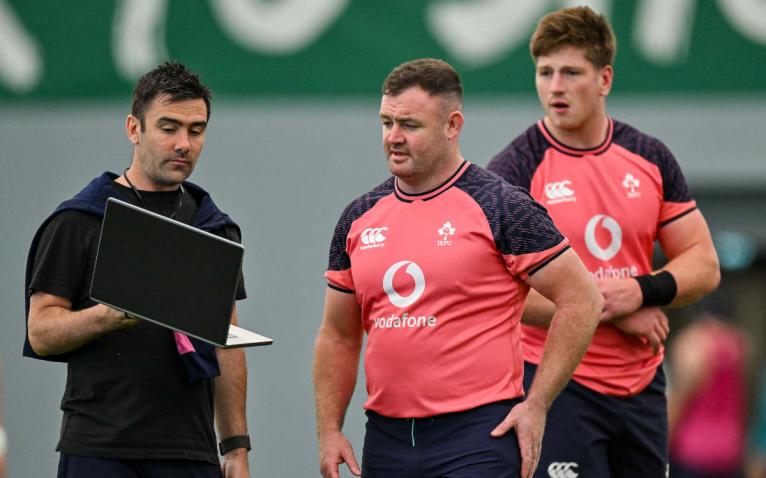Analysis in rugby has increasingly become part of the fabric of the sport over the last 20 years. Every professional side has at least one analyst, many semi-professional sides will have one, and companies like Veo are opening the market up to the masses. It’s tempting to think that there’s very little left to be found in rugby. But is that the case? Has analysis ‘solved’ rugby, and if not, why not?
It’s worth taking a step back and asking what analysis can actually improve. Generally, it falls into two categories: opposition analysis and self-analysis. Opposition analysis helps you to prepare for your next match by spotting strengths or weaknesses of your opponent. Self-analysis looks at your own team and tries to correct errors and make the team better.
This analysis has to be actionable and accurate. There’s no value in presenting analysis which is either too complicated or requires too many other things to be calculated beforehand.
For example, maybe you’ve spotted that the opposition do something interesting and it’s proceeded by a centre running a particular line and a flanker being in a specific location. That’s great, but no player will be able to read all those signals to then work out what will happen next. Paralysis by analysis is overused, but the principle is sound; you don’t want your players going out with loads of thoughts running through their minds.

In those couple of decades that analysis has been a part of rugby, not a huge amount has changed. Companies like Oval Insights and Opta have come in to collect vast swathes of match data across ever-growing tournaments. They have replaced the pen and paper approach of the past.
A company like Hudl has created a platform which allows players to view their own analysis wherever they might be. That has replaced video tapes and the endless burning of DVDs.
GPS units have come in to track the workload of players. Static cameras are commonplace on training grounds to record training sessions. The amount of data out there is exceptional and would blow the mind of even the most ardent analysis fan. But we haven’t yet ‘solved’ rugby, or even made a dent in doing that. Why?
A friend of mine is in this world and has worked six days a week since the start of the season. His day off is spent doing opposition analysis.
If you’ve never seen behind the scenes at a club, what do you expect it looks like? Have a think, I won’t laugh. Maybe you imagined a very high-tech set-up? Perhaps there are enormous touchscreens? Maybe lasers measuring something important? Possibly VR (virtual reality)? I’m sorry to say it isn’t that. You’re more likely to find a small team of hugely overworked, and massively underpaid, analysts.
These unsung men and women have almost all done at least three years at university, often more. They’ve taken unpaid internships, and maybe are still doing that. In many cases, especially among the newer intake, they are experts in coding or database management; skills that could earn them a small fortune in other walks of life. A friend of mine is in this world and has worked six days a week since the start of the season. His day off is spent doing opposition analysis. Most of the time they earn less than £30k a year. Some are on much less than that.
Once the game is split up into its different parts; lineouts, scrums, passes, rucks, carries etc, they will then move on to doing the same for training. Then it will be creating presentations for coaches to show the players. Then back to the game.

Even with all the data available, there is precious little time to actually interrogate it for hidden match-winning truths. Most coaches are willing to listen to things which can help them to win games, but that’s not always true.
Some coaches will treat analysts like a box that has to be ticked. Letting them do all the hard yards, then discarding the output immediately. You might imagine that rugby at the highest level is vastly different to your own experiences of playing at grassroots level. In most teams it is. In some teams you’d be disheartened at the similarities.
With most of that data only going to clubs, and most clubs not having the time to do much with it, we haven’t moved our knowledge of the game that far forward. There is still plenty of low hanging analytical fruit. It’s there to be picked by a forward-thinking club willing to let their received wisdom come under fire. They will gain an immediate advantage.
Take the example of a missed tackle. We know who missed it, but we don’t know if they missed it because they simply shirked the tackle or because they were left high and dry by the lack of off-the-ball effort by team-mates.
The other reason why analysis is still in its early incarnation is because most of the game isn’t tracked. Stats providers will track around 3,000 actions per game. Those will include carries, passes, kicks, penalties and rucks. However, they all happen on the ball, or very close to the ball, in the case of tackles or ruck entries, for example. Most of the game of rugby happens off the ball though.
At any one time, 29 people – or 30 during a change of possession from a kick – don’t have the ball and are effectively not tracked. We don’t know what they are doing. Take the example of a missed tackle. We know who missed it, but we don’t know if they missed it because they simply shirked the tackle or because they were left high and dry by the lack of off-the-ball effort by their team-mates.
There are some attempts to solve this. The excellent Simon Chi recently tracked all player movements through their GPS units and was able to see how a breakdown in defensive gap distance led to a line break. This is reliant on accurate GPS units – not always guaranteed – and a computer capable of managing the frankly eye-watering amount of data needed to track like this for an entire game.
Defence coaches in rugby will often espouse the importance of “getting the spacing right”. Here is a visual representation of “defensive density” from a scrum which was generated using player GPS data. Density was calculated based on distance between all defenders on the pitch
1/ pic.twitter.com/K15mInclle— Simon Chi (@Vanguard403) November 20, 2023
Rugby will continue to grapple with these issues. It follows in football’s footsteps and those steps are well ahead of where we are now. But the game is still a long way from solved.
The good news is that if you are one of the growing number of amateur analysts, you just might be finding gold in the data which clubs haven’t yet discovered. Now that’s an exciting thought.


Great article - We have 1 fantastic analyst at our club in Nat 2-3. Historically i thought he was massively undervalued for the work that he did. Realistically, he could give us the opposition set piece on a Tuesday before and we’d be happy with that - We all have other day jobs so it seemed like sharing a 10 minute clip of their lineouts, scrums and kick offs was an efficient use of our time and we could avoid analysis paralysis.
All this analysis is spoiling our game - we are getting like American Football. Lets get back to 15 v 15 for 80 minutes of rugby football, referees upholding the laws of the game and making all the decisions. Professional Rugby will kill our game!!